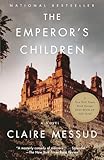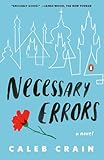Gay is the new vampire. Everywhere in YA fiction, boys are kissing boys, girls are sidling up against the captains of their swim teams, and queer kids are getting cute. It’s wonderful. YA books with LGBTQ themes and characters, written by straight and by LGBTQ authors, are winning critical acclaim and they’re selling.
 A super short list of great recent YA LGBTQ books might include Emily Danforth’s The Miseducation of Cameron Post, everything by David Levithan, The House You Pass on the Way by Jacqueline Woodson, Some Day This Pain Will Be Useful to You by Peter Cameron, and The Vast Fields of the Ordinary by Nick Burd.
A super short list of great recent YA LGBTQ books might include Emily Danforth’s The Miseducation of Cameron Post, everything by David Levithan, The House You Pass on the Way by Jacqueline Woodson, Some Day This Pain Will Be Useful to You by Peter Cameron, and The Vast Fields of the Ordinary by Nick Burd.
While some of YA LGBTQ lit’s appeal might be its current sociopolitical relevance, most of its appeal is simply that this is our world now. We live in an era where, year by year and state by state, our lives are becoming fully integrated into mainstream American culture. “There’s no question,” says Emily Danforth, the author of The Miseducation of Cameron Post, “that there are generations now of teen readers ready for these books. It feels more normal—and that’s a problematic word—if you’re 14 to have queer friends and talk about sexuality in a way that is very different than it was 15 years ago.“ Not to mention, there’s a universality here: All teens, regardless of their orientation or identity, are working out what it means to be sexual beings, with the confusions, desires, and pressures that entails.
Yet there’s a tremendous disconnect between what’s happening in the YA marketplace and what’s going on with adult fiction. This is true across genres, for both literary and commercial books. While there are some well-known LGTBQ writers like Michael Cunningham, Alice Walker, Armistead Maupin, Edmund White, and Dorothy Allison, there aren’t many. In fact, these few writers feel more like the token exceptions that prove the rule. Overall, mainstream LGTBQ adult fiction is non-existent, even in 2014.
But why, especially when contrasted with the YA boom, is this the case? On first thought, we might attribute the differences in popularity to demographics, to generational perspectives, with all the statistics showing that younger people are more likely to be gay friendly than older folks. Perhaps straight teens are cool with the LGBTQ experience in a way straight adults simply are not? When thinking about these differences, author and writer for The Huffington Post Kergan Edwards-Stout said, “Younger people in general seem to be much accepting of LGBT issues and people and approach life a little more globally. I think older audiences tend to be closing themselves off, instead of expanding.”
Unlike the static adult audience, the YA audience is dynamic. Every six years or so, the next mini-generation of teen readers emerges, with new interests, references, and cultural trends that can be tapped into. However, with a 2012 study showing that about 43 percent of YA readers are adults (primarily between the ages of 18 to 44), this demographic explanation alone doesn’t suffice. After all, if so many adults are willing to read YA fiction with LGBTQ themes, why aren’t they also reading adult fiction with LGBTQ themes in comparable numbers? We need to look at deeper distinctions to help us understand this disparity between the YA and adult marketplaces and understand the ongoing exclusion of LGBQT writers.
 There is a thick history here where writers with non-dominant identities (LGTBQ writers, writers of color) are isolated into their own genres. That is to say, if you’re gay, you don’t write “fiction.” You write, “Gay fiction.” This still holds true. Novels like The Emperor’s Children by Claire Messud or The Art of Fielding by Chad Harbach, which feature gay characters, are fine, but novels with actual LGTBQ protagonists written by an actual LGTBQ authors are likely to be relegated to their own audiences, genres, and bookstore shelves. These books often aren’t seen as marketably mainstream.
There is a thick history here where writers with non-dominant identities (LGTBQ writers, writers of color) are isolated into their own genres. That is to say, if you’re gay, you don’t write “fiction.” You write, “Gay fiction.” This still holds true. Novels like The Emperor’s Children by Claire Messud or The Art of Fielding by Chad Harbach, which feature gay characters, are fine, but novels with actual LGTBQ protagonists written by an actual LGTBQ authors are likely to be relegated to their own audiences, genres, and bookstore shelves. These books often aren’t seen as marketably mainstream.
First, there’s the cultural element to consider. There may be cues in LGBTQ novels and stories that straight readers “don’t get.” Fictional LGBTQ characters sometimes inhabit spaces that are unfamiliar to straight readers. There are the gay bars, lesbian hang-outs, and…queer poetry readings? While we can talk about these occasional unique cultural differences, this isn’t really it.
Because there’s the sex. And sex, as any reader of Jonathan Franzen, Alice Munro, or Philip Roth will know, is a constant of contemporary fiction. Where would our literature be without heterosexual adultery as a convenient plot device? And the thing about gay sex is that it can be “a bother,” to use Kergan Edwards-Stout’s euphemism, for straight readers. Which is to say, two same-sex teens kissing in a YA novel may be acceptable to a predominantly straight audience. But two dudes blowing each other—or engaging in anal—is, well, a touch “too gay.” From a commercial perspective, the nitty gritty of LGTBQ relationships is often still seen as unpalatable and other.
Aside from sucking generally, this dismissal of LGBTQ artwork has personal resonance for many LGTBQ readers and writers, including me. A couple years ago, an agent told me via email that my first manuscript was, in a sense, “too gay.” The agent’s exact words were, “this is America, after all, where a million soccer moms will read 50 SHADES OF GREY, but wouldn’t touch a book that is far less graphically gay than that one is graphically straight (or so I hear, anyway).” That concluding parenthetical aside—“(or so I hear, anyway)”—is perfect and speaks to the lowest common denominator of audience acceptability. It’s as if the liberal, cosmopolitan agent is shrugging, What can you do about the tastes of the heterosexual hoi polloi?
Though exuberant gayness certainly wasn’t the only thing that made my first manuscript not commercially viable, I was struck by the straight-up-ness of the agent’s assessment: Gayness, like actual gayness (versus the unremittingly pleasant kind you might encounter through Modern Family, Ellen, or a David Sedaris audiobook), well, it just doesn’t sell. This issue, when compounded by the well-documented gender disparities in publishing, is exacerbated for lesbian, trans, and queer writers for whom the intersectionalities of their identities mean they are even more likely to be excluded and ignored.
Of course, this isn’t anybody’s fault per se, which is exactly the point. You can’t blame agents for not representing LGBTQ adult fiction because they think it won’t sell to publishers, since the publishers are pretty convinced it won’t sell to readers. It’s a form of cultural exclusion that isn’t unique to publishing. There are few out Hollywood actors, for example, and fewer still mainstream movies with LGBTQ protagonists (unless they die vis-à-vis AIDS or driving off a cliff a la Thelma & Louis—my gosh, it’s 2014, and the two most mainstream gay movies are still Brokeback Mountain and Philadelphia.)
 Which isn’t to say there aren’t amazing LGBTQ adult books (and movies) created every year. Caleb Crain’s splendid 2013 novel Necessary Errors proves how well-crafted prose, engaging characters, and beautiful language can capture any audience. And as YA author Nick Burd wrote in an email interview, “I like to think that all readers dive into books willing to encounter people and situations that are foreign to them. But I guess that’s slightly wishful thinking.“ Still, LGBT books for adult audiences, especially those containing a fair bit of sexual congress, face significant barriers. Luckily, there are smaller presses like ITNA, established earlier this year by Christopher Stoddard, the goal of which is to publish off-beat books, all of which so far feature gay, occasionally transgressive themes.
Which isn’t to say there aren’t amazing LGBTQ adult books (and movies) created every year. Caleb Crain’s splendid 2013 novel Necessary Errors proves how well-crafted prose, engaging characters, and beautiful language can capture any audience. And as YA author Nick Burd wrote in an email interview, “I like to think that all readers dive into books willing to encounter people and situations that are foreign to them. But I guess that’s slightly wishful thinking.“ Still, LGBT books for adult audiences, especially those containing a fair bit of sexual congress, face significant barriers. Luckily, there are smaller presses like ITNA, established earlier this year by Christopher Stoddard, the goal of which is to publish off-beat books, all of which so far feature gay, occasionally transgressive themes.
With all these factors to consider, it benefits us to look at the burden of “relatability.” When the notion of “relatability” is discussed, this burden is usually placed on the cultural object, on the book or movie. Audiences, we’re told, are drawn in by relatable characters, relevant stories, and accessible prose. But this should be a two-way street. Readers need to challenge themselves, to expand their own definitions of what they find relatable, to break free from provincial mindsets where the sole purpose of art is to provide a mirror, not of life, but of readers’ own lives. We need to explode the established notions of relatability. All the LGBTQ writers I talked to or emailed with conveyed this idea in some way or another.
What’s clear is progress, even if it’s slow, is being made. Research by YA author Malinda Lo, building on the work of Christine Jenkins, shows consistent growth in publication of YA LGBTA novels going back all the way to 1969—with the biggest gains occurring since 2004. These teen readers, with their broadening notions of relatability, are growing up, growing into adult readers. Hopefully, soon they will be eager to share in more adult LGBTQ stories, ready to embrace a world that only spins forward.
Image Credit: Pexels/Markus Spiske.









